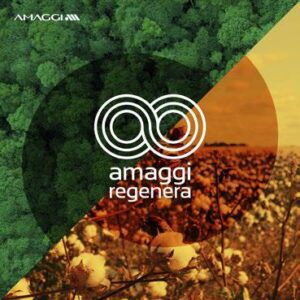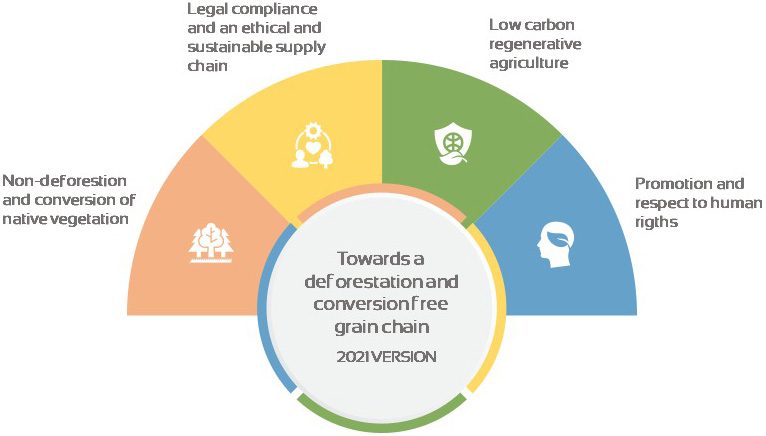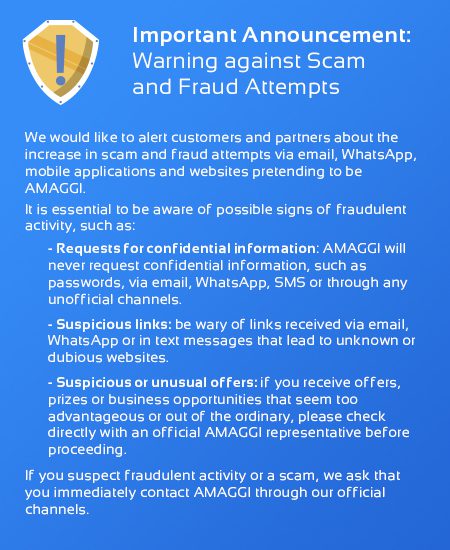Low Carbon
and Regenerative Agriculture
In a commitment to decarbonization by 2032, AMAGGI invests in actions to improve its operations with efficiency and productivity gains. To this end, we engage in low-carbon agriculture initiatives with regenerative agriculture; no-till; crop-livestock integration and soil quality control. In addition, the activities expansion only takes place on degraded or already opened areas.
The expansion of renewable energy sources. investment in technology and innovation; efficient use of inputs, choice of seeds and cultivars according to productivity, tolerance and resistance to pests are other initiatives of the company.
Carbon NetZERO
In 2021, AMAGGI joined the Science Based Targets (SBTi) initiative, through the Business Ambition for 1.5°C campaign, and with that it is now also part of the global Race to Zero movement.
The commitment is to achieve zero emissions by 2050 (NetZero emissions), through the decarbonization and neutralization of any residual emissions, especially from regenerative agriculture.
Regenerative agriculture encompasses different practices to actively improve the quality of soil, water, biodiversity and carbon cycles.
And to reach the decarbonization goal by 2032, AMAGGI constantly invests in innovations, good practices and technologies for a more efficient operation, such as:
- Renewable energy: Expand the production of renewable energy and zero greenhouse gas emissions. Currently, small hydroelectric plants and solar panels produce much more energy than the entire AMAGGI consumes.
- Meteorological Radar for Agriculture: Investment in innovative processes, such as monitoring and analyzing the micro-climate in real time, through the first meteorological radar dedicated to agriculture in the state. The instrument aims to assist in day-to-day decision-making about agricultural operations, always subject to climatic variations.
- Telemeclima: 24/7 Production monitoring of planting areas, supported by precision agriculture tools. As a result of the technologies applied in the field, the farms gain not only in productivity and efficiency, but in lower use of inputs and greenhouse gas emissions.
- Biological Control: We invest in research and development of biological control of pests and diseases. As a result, we have more sustainable agriculture, with less use of chemical pesticides. The company is currently investing in a Bio-defensive plant.
- No-tillage: A type of management that preserves the soil and its beneficial microorganisms. It also improves soil fertility by retaining organic matter, prevents erosion and reduces CO₂ emissions.
- Operations in different modes: We operate in different modes of transport (road, rail and waterway) in order to make the flow of grains and fibers increasingly efficient and sustainable. Highlight for river navigation in the Northwest Export Corridor. In it, 1,100 kilometers are covered by barges, where each one represents the load of approximately 45 trucks.










